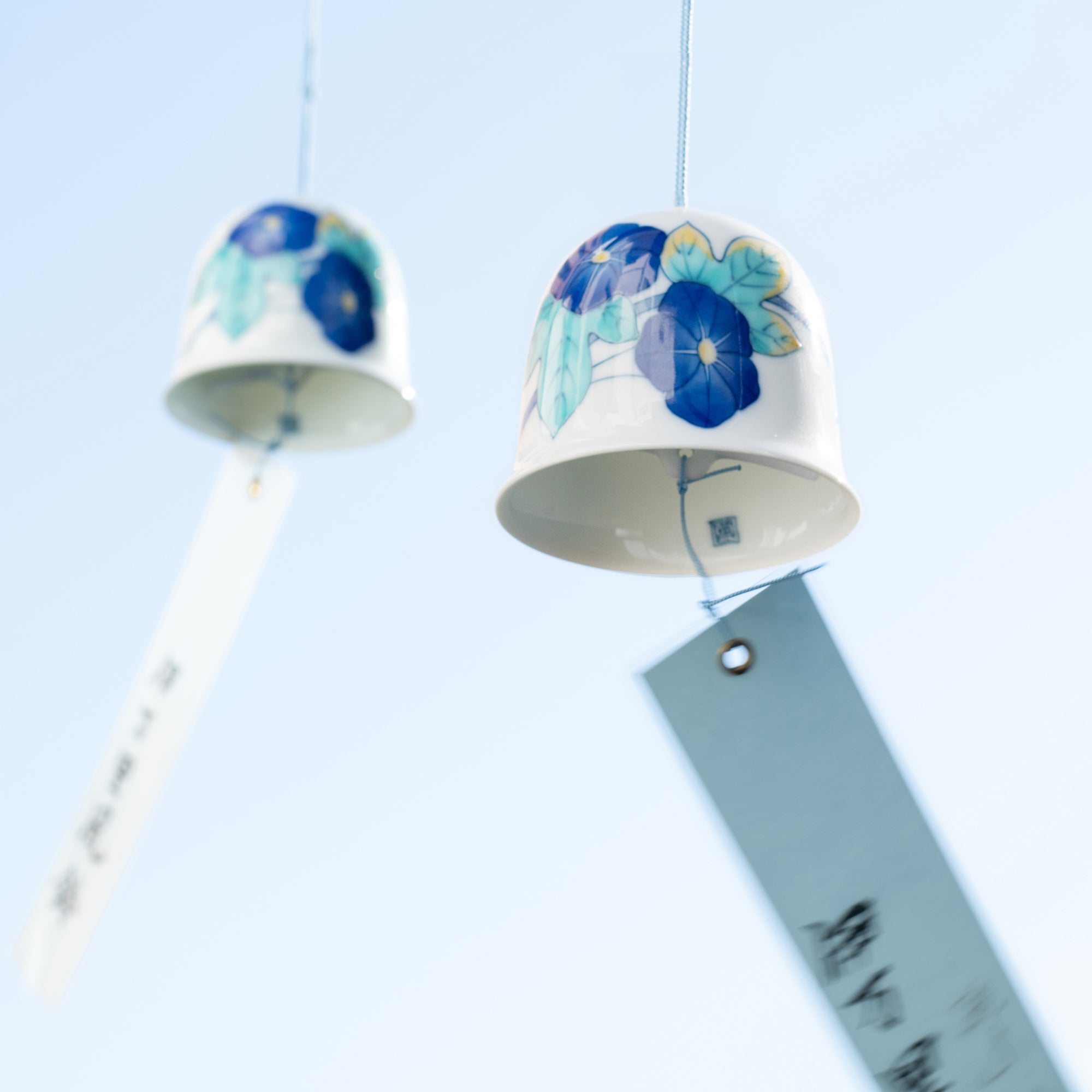
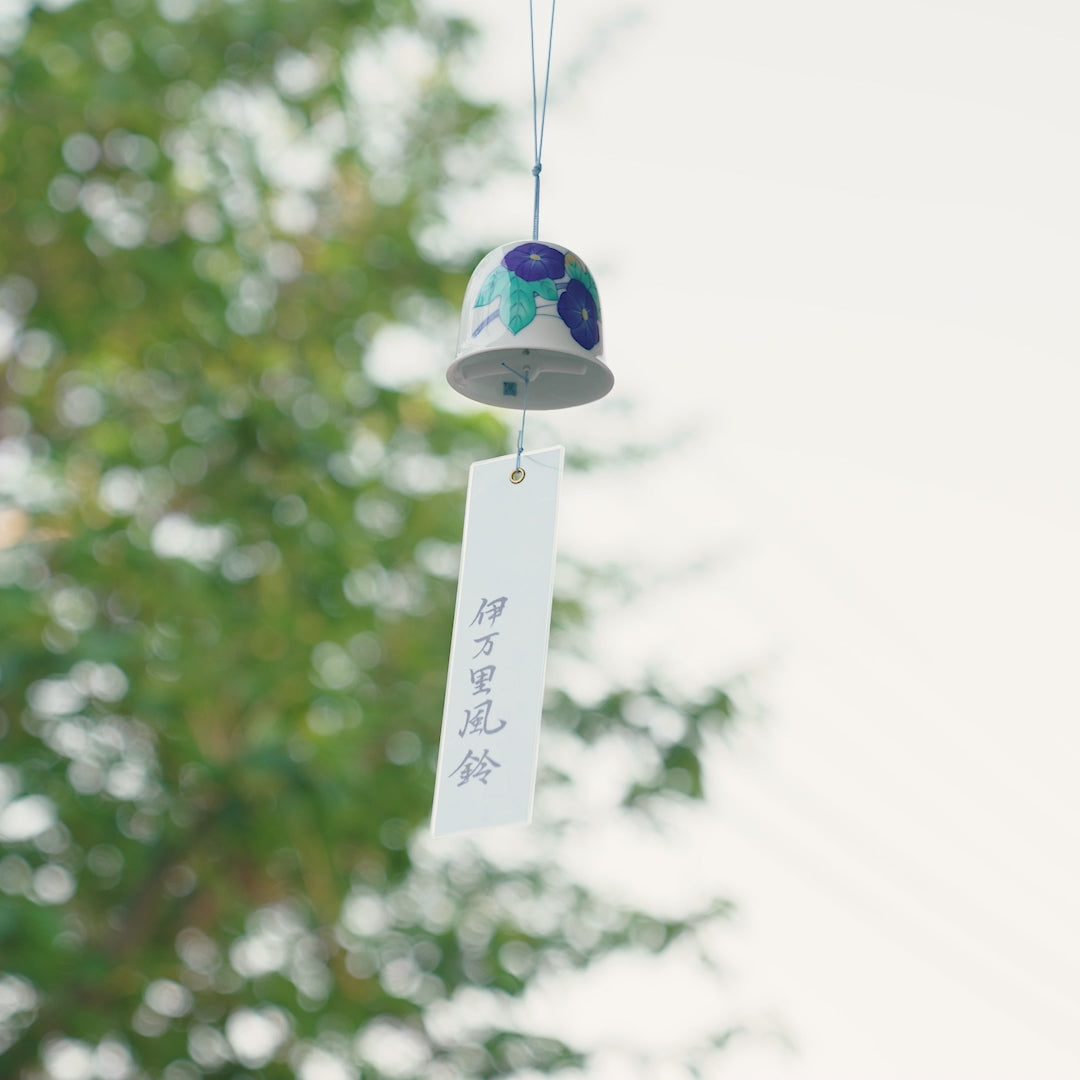
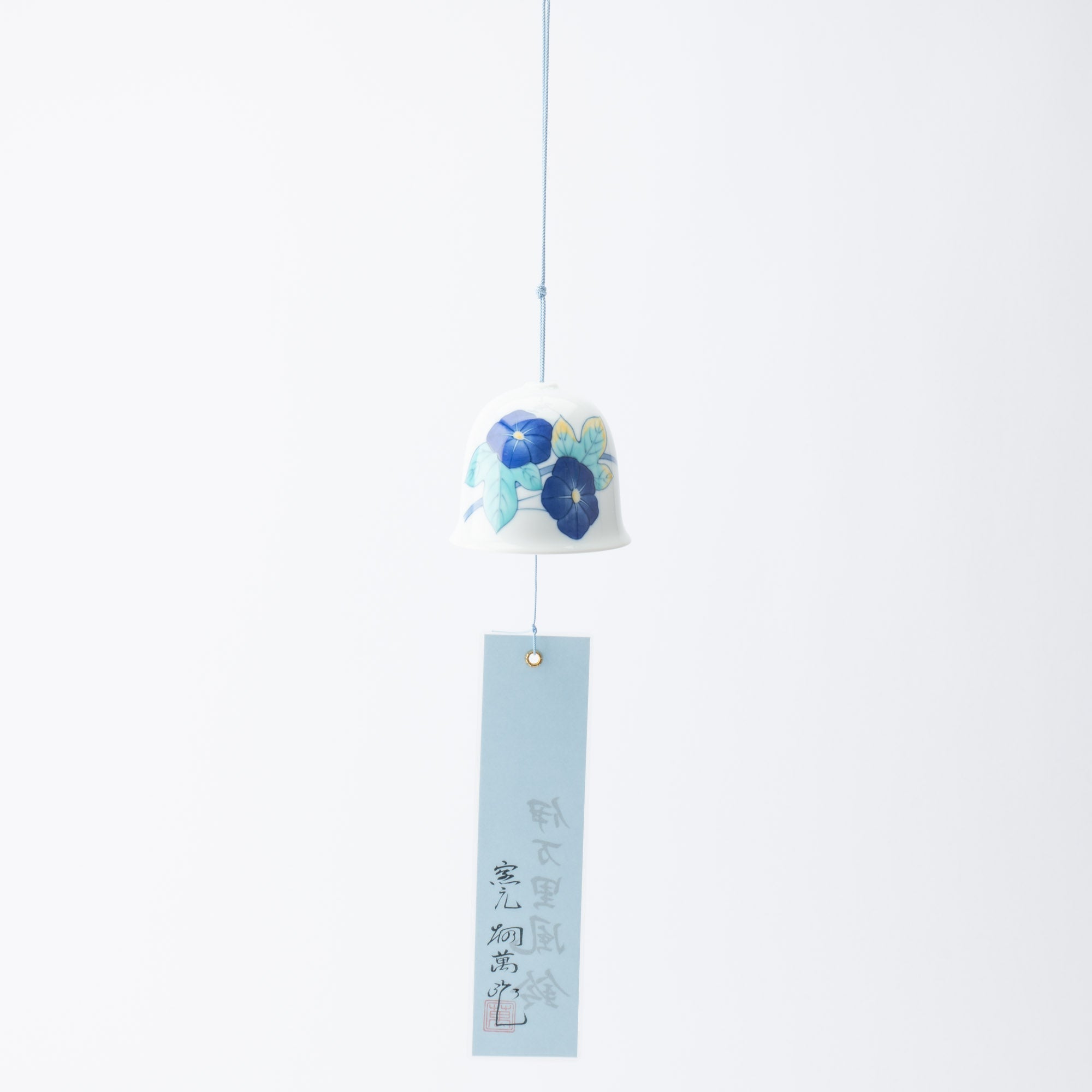
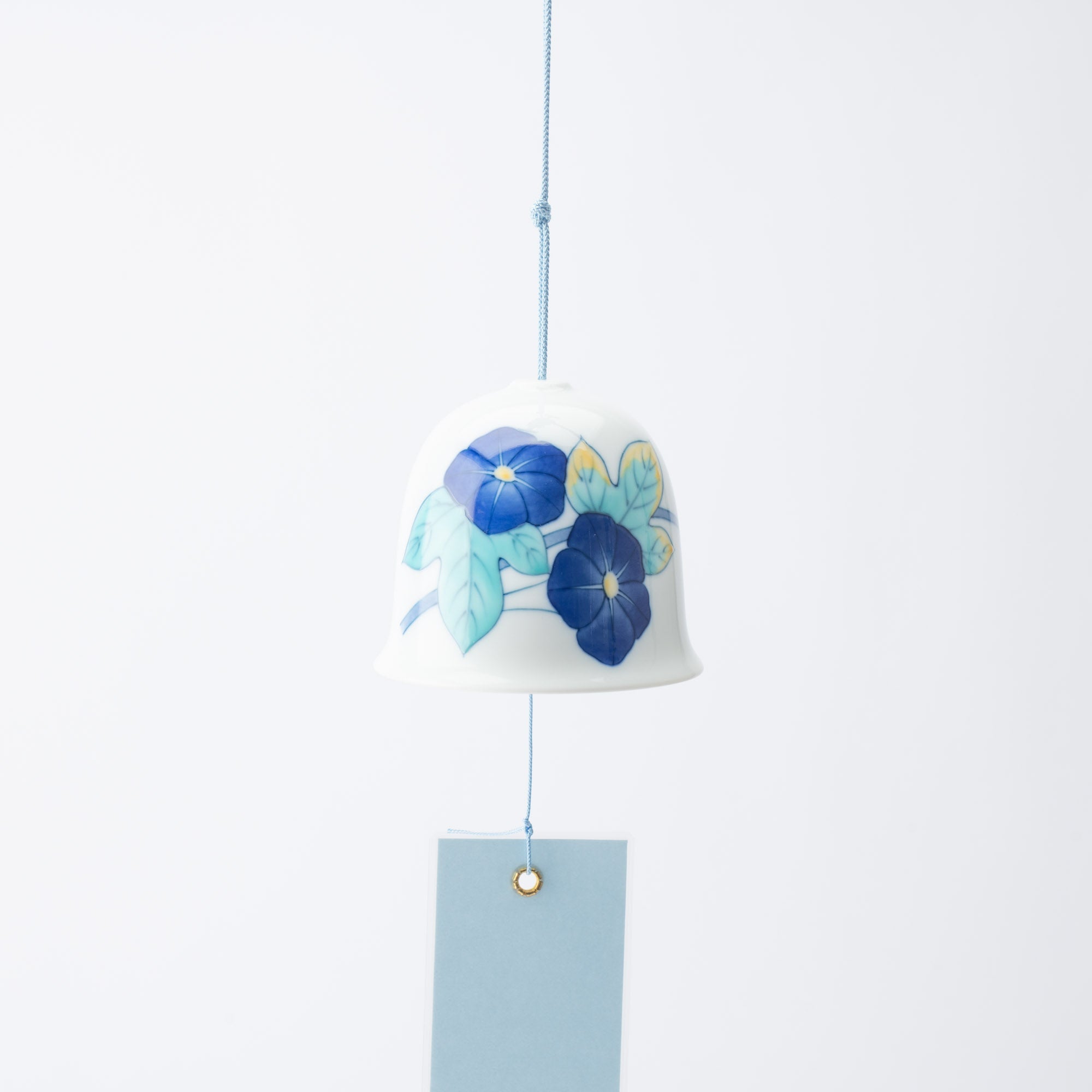
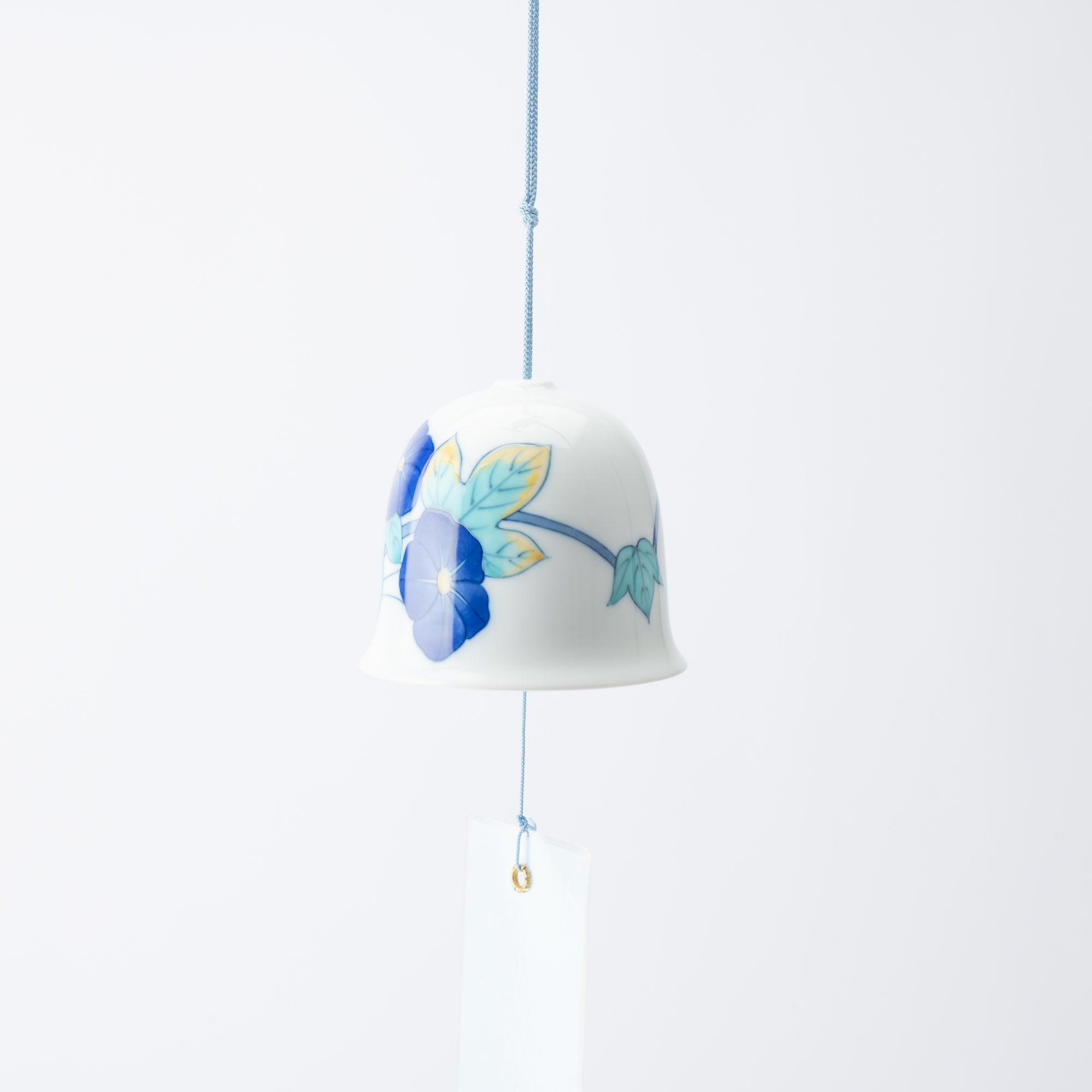
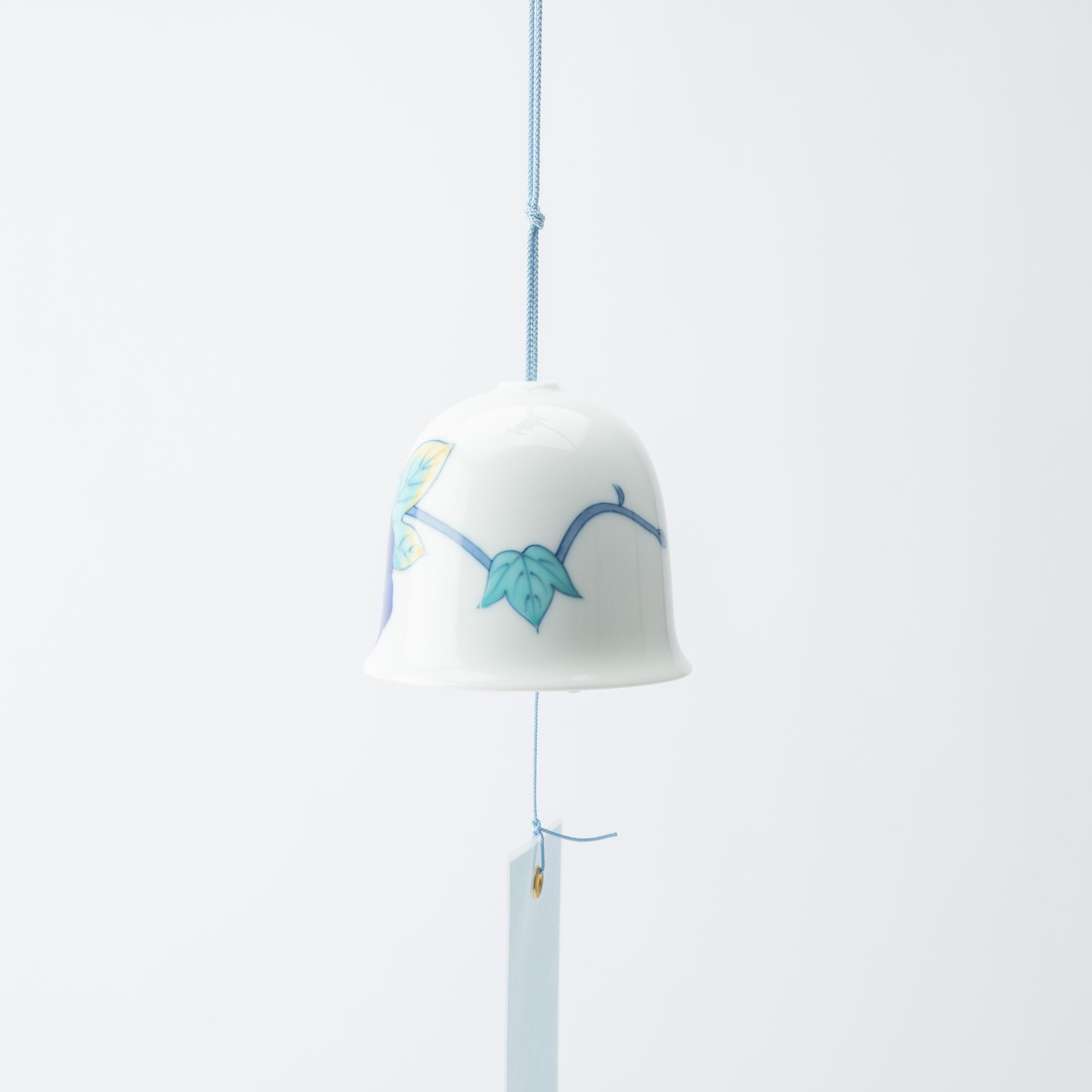
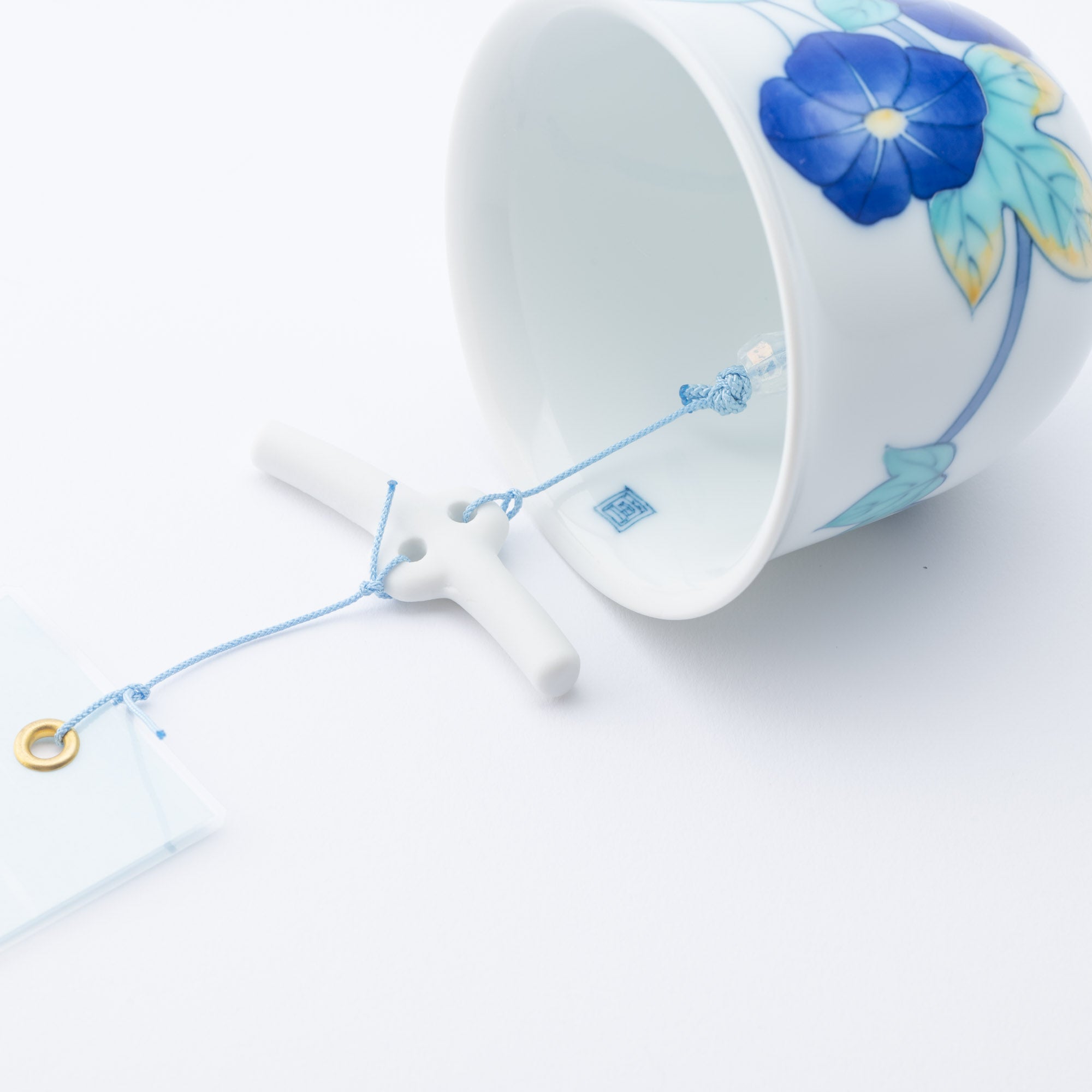

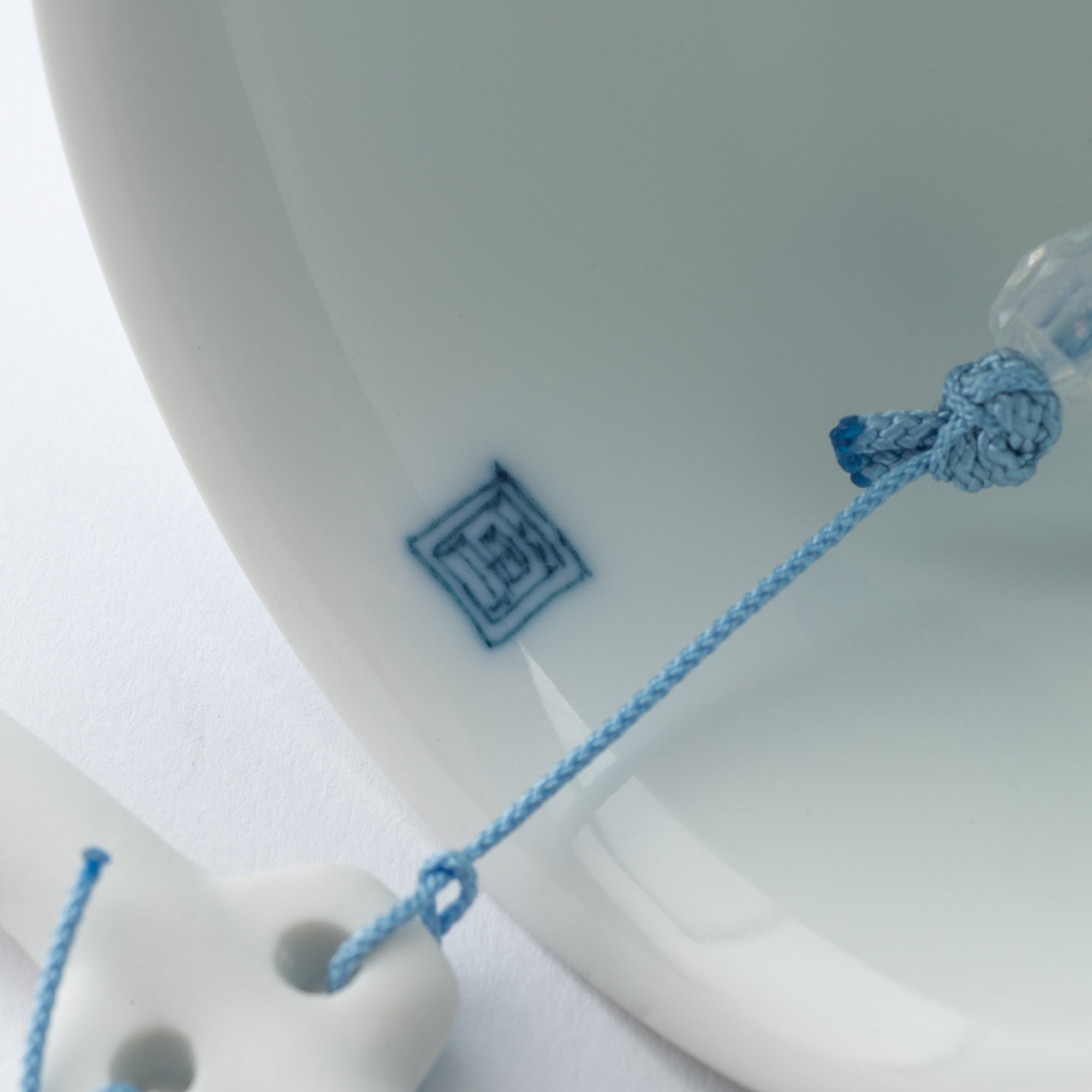
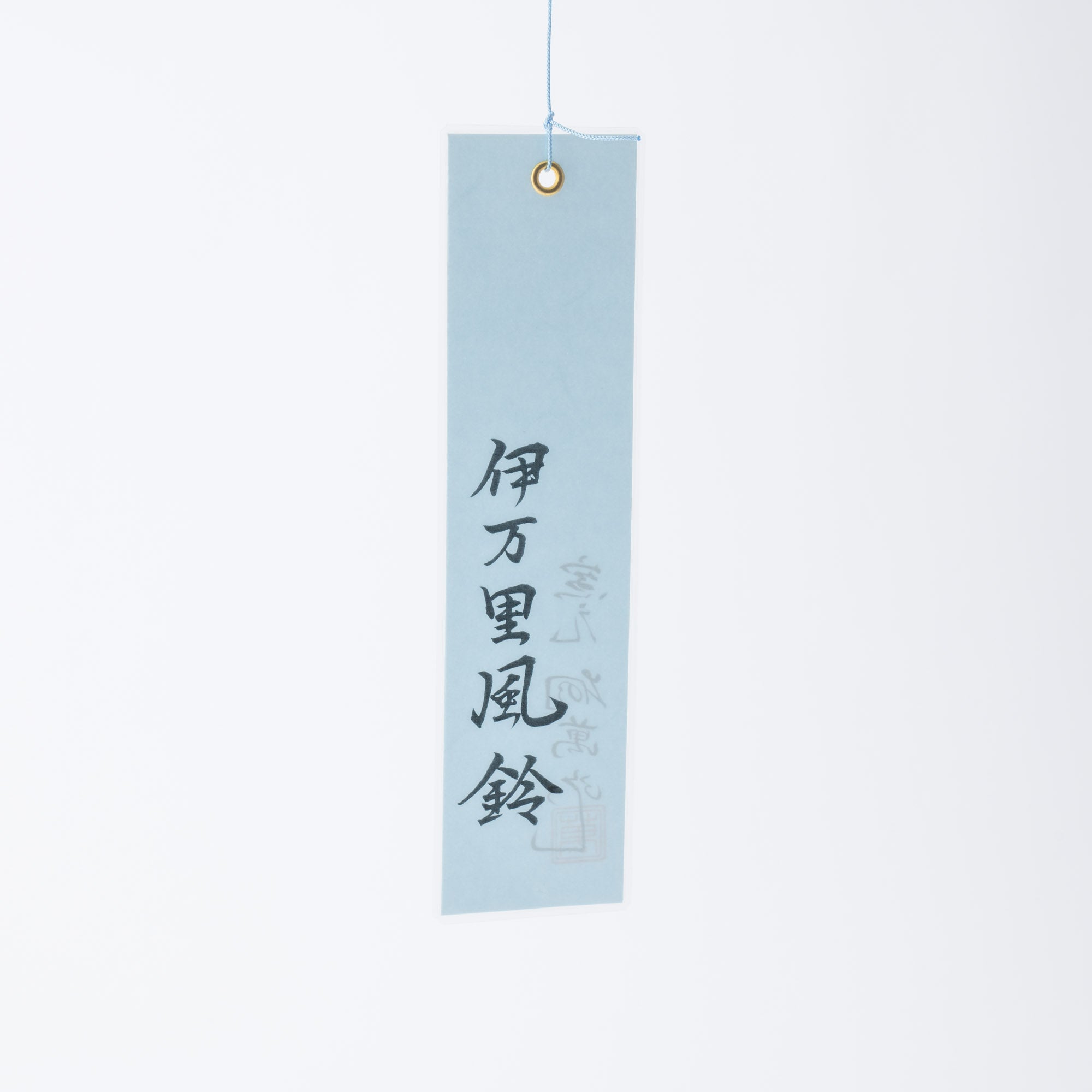
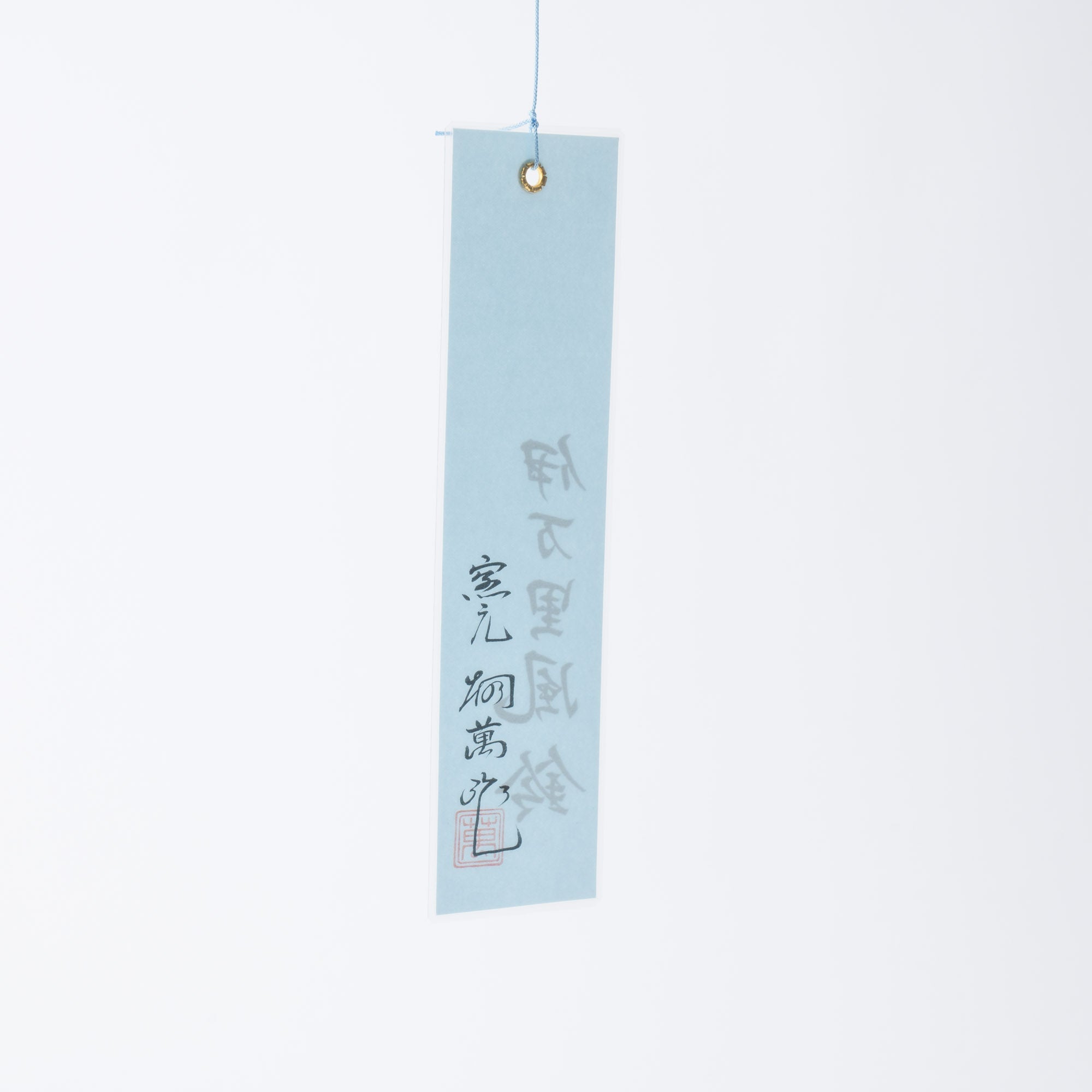
Nabeshima Morning Glory Lange Windglocke
Estimated Shipping Widget will be displayed here!
Diese Windglocke hat ein wunderschönes Prunkwinden-Design im Iro-Nabeshima-Stil (farbiges Nabeshima) auf wunderschönem weißem Porzellan. Die Bemalung betont die blaue Farbe und erzeugt ein Gefühl von Kühle.
Die Japanische Prunkwinde ist eine Sommerblume, die in der Nara-Zeit (710–794 n. Chr.) aus China eingeführt wurde. Ihr japanischer Name asagao, was „Morgengesicht“ bedeutet, soll von seiner Eigenschaft stammen, früh am Morgen zu blühen, und wurde mit dem Gesicht einer Morgenschönheit verglichen.
Der Stil von Iro-Nabeshima hat traditionelle Regeln, bestehend aus einer Farbe für Sometsuke (Indigoblau) und drei Farben für auch bekannt (rot, gelb und grün). Nachdem der Umriss in Indigoblau gezeichnet wurde gosu Pigment, Aufglasurmalerei in Rot, kibi (gelb) und moe (Grün) wird als Farbe im Design verwendet. Obwohl es den Anschein erweckt, als würden viele Farben verwendet, werden tatsächlich nur drei verwendet – ein Markenzeichen von Iro-Nabeshima – und seine Schönheit gilt als Höhepunkt japanischen Porzellans.
EINZELHEITEN
| Quantity | 1 |
| Size |
[Wind Bell] D 7.7 cm (3 in) x H 7.8 cm (3.1 in) [Clapper] D 5.9 cm (2.3 in) x H 2.2 cm (0.9 in) [Strip of paper] L 18.4 cm (7.2 in) x W 4.9 cm (1.9 in) |
| Material | Porcelain |
| Microwave | No |
| Dishwasher | No |
Hersteller / Marke
Hataman Touen greift die reiche Geschichte und die Techniken der Imari-Nabeshima-Keramik auf, eine 370-jährige Tradition, und verkörpert gleichzeitig den Geist der japanischen Kultur, der Herz und Seele bereichert. Das Unternehmen möchte japanische Ästhetik in einem modernen Kontext verkörpern und seine Geschichte und Produkte mit der Welt teilen.

Kunsthandwerk
Nabeshima-Ware ist eine Porzellanart, die im sorgfältig verwalteten Brennofen der Nabeshima-Domäne hergestellt wird. Dieser Brennofen, ein staatliches Projekt unter der direkten Aufsicht der Saga-Nabeshima-Domäne, erlebte seine Blütezeit in der frühen Edo-Zeit (1603–1868 n. Chr.).
Etwa 250 Jahre lang war Nabeshima-Ware ausschließlich Shogunen und Feudalherren vorbehalten. In den Brennöfen wurden exquisite Stücke in Stilen wie Iro-Nabeshima (Überglasur-Emaille), Ai-Nabeshima (Sometsuke) und Nabeshima seiji (Seladon). Nach dem Ende des Feudalsystems wurden die Brennöfen privatisiert, neue Töpfer wurden aufgenommen und es entstand das, was heute als Imari-Nabeshima-Ware bekannt ist.

Anmerkungen
Optionen auswählen











Estimated Shipping Widget will be displayed here!
Windspiele
In Japan sind Windspiele ein beliebtes Symbol des Sommers und werden von all jenen geschätzt, die Erfrischung von Hitze und Feuchtigkeit suchen. Von der Brise gestreichelt, erzeugen japanische Windspiele klare, zarte Klänge, die den Geist beruhigen und ein Gefühl der Kühle vermitteln. Hängen Sie ein Windspiel aus unserer Kollektion draußen auf, um sein Spiel im Wind zu genießen, oder drinnen, um seine Schönheit und beruhigende Wirkung das ganze Jahr über zu genießen.


